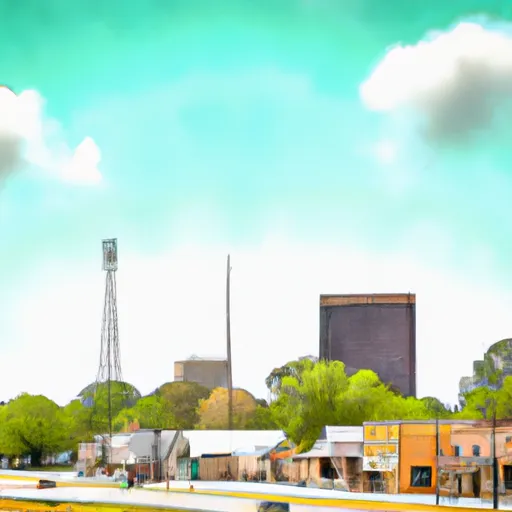°F
°F
mph
Windspeed
%
Humidity











Rosepine, Louisiana is a charming town located in Vernon Parish. It experiences a humid subtropical climate characterized by hot, humid summers and mild winters. Summers are typically long and hot, with temperatures frequently reaching the high 90s°F (30s°C). Winters are generally mild, with temperatures in the 50s°F (10-15°C). Rainfall is evenly distributed throughout the year, with occasional showers and thunderstorms.
Hydrologically, Rosepine benefits from its proximity to the Sabine River, which provides a valuable water source. Additionally, the area is surrounded by numerous small lakes and ponds, offering opportunities for fishing and boating enthusiasts. The nearby Kisatchie National Forest boasts scenic trails for hiking and camping. Nature lovers can explore the diverse flora and fauna found in the area, including abundant wildlife.
Residents and visitors of Rosepine can take advantage of various outdoor recreational activities. The nearby Toledo Bend Reservoir offers excellent fishing and boating opportunities. Kisatchie National Forest provides countless trails for hiking, biking, and horseback riding. For those interested in hunting, the area is abundant with deer, turkey, and other game. With its favorable climate and beautiful natural surroundings, Rosepine provides ample opportunities for outdoor enthusiasts to enjoy nature and explore the great outdoors.
Weather Forecast
Rosepine receives approximately 1493mm of rain per year, with humidity levels near 80% and air temperatures averaging around 19°C. Rosepine has a plant hardyness factor of 8, meaning plants and agriculture in this region tend to thrive here all year round.
Regional Streamflow Levels
211
Cubic Feet Per Second
32
Cubic Feet Per Second
36
Cubic Feet Per Second
1,090
Cubic Feet Per Second
Nearby Camping
| Camping Area | Reservations | Toilets | Showers |
|---|---|---|---|
| Fullerton Complex | |||
| Red Bluff Camp Complex | |||
| Kisatchie Bayou Complex | |||
| Sam Houston Jones State Park | |||
| Dogwood Complex | |||
| Hodges Gardens State Park |



